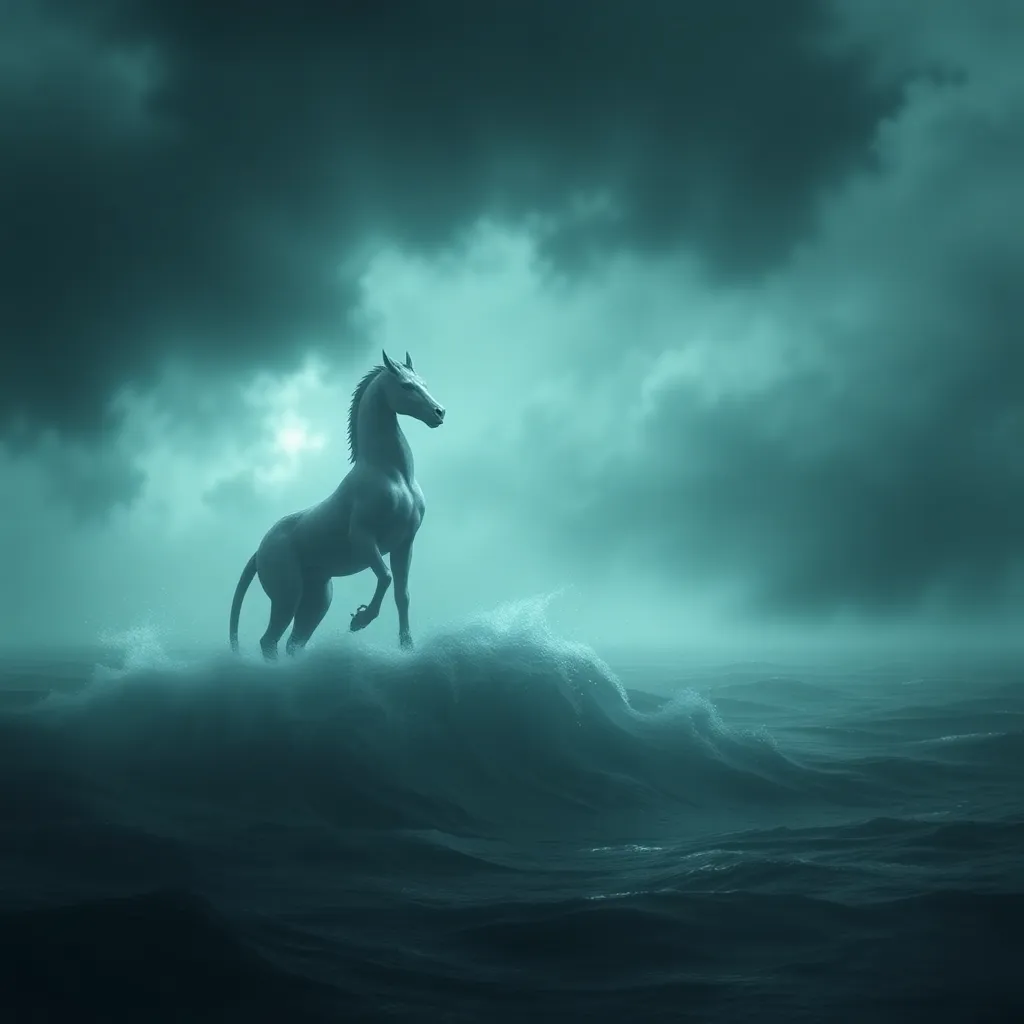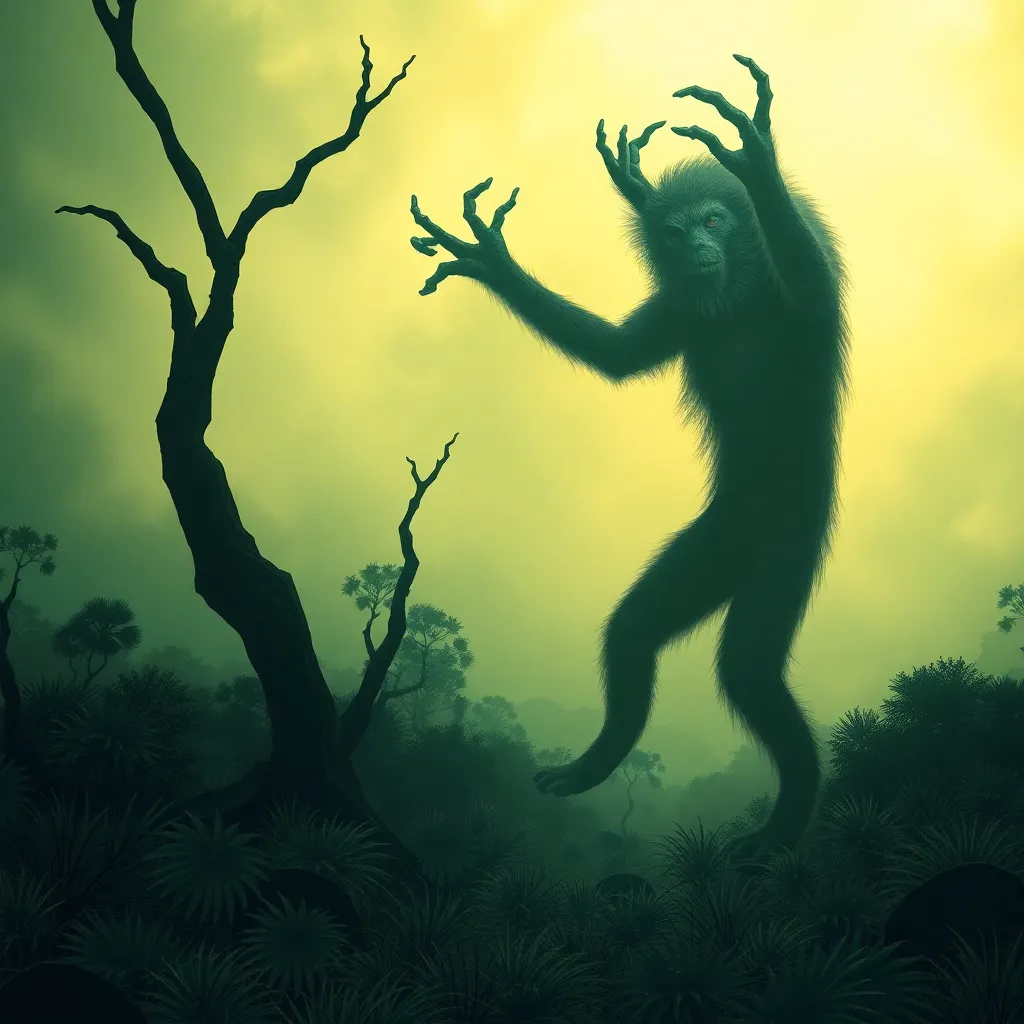The Kelpie’s Echoes: Examining the Myth’s Influence on Other Mythological Creatures
I. Introduction
The Kelpie is a mythical creature rooted in Scottish folklore, often depicted as a shape-shifting water spirit that inhabits rivers and lochs. Originating from ancient Celtic traditions, the Kelpie serves as both a cautionary tale and a symbol of the unpredictable nature of water. These enchanting yet treacherous beings have captivated the imaginations of many throughout history.
In Scottish culture, the Kelpie holds significant importance as it reflects the relationship between humans and the natural world, particularly water bodies. As a creature that embodies both beauty and danger, the Kelpie serves as a reminder of the duality of nature – it can nurture life but also take it away.
This article aims to explore the Kelpie’s influence on other mythological creatures, examining its characteristics, its interaction with other water-based entities, and its cultural significance across various narratives.
II. The Characteristics of the Kelpie
A. Physical description and notable features
Kelpies are often described as beautiful horses with a shimmering coat, capable of appearing as ordinary horses to lure unsuspecting travelers. However, when approached, they reveal their true form, which can be horrifying, featuring dark, wet manes and glowing eyes. Legends frequently depict them emerging from water, their bodies glistening with droplets as they transition between forms.
B. Behavioral traits and the Kelpie’s interaction with humans
The Kelpie’s behavior is characterized by its cunning and deceptive nature. It often lures individuals, especially children, to ride on its back; once they do, the Kelpie plunges into the water, drowning its prey. This dark aspect of the Kelpie’s personality serves as a warning against the dangers of both the water and the temptation of beauty.
C. Symbolism of the Kelpie in Scottish culture
- Nature’s duality: The Kelpie symbolizes the balance between beauty and danger in nature.
- Environmental caution: It serves as a metaphor for the respect one must have for the power of water.
- Folklore legacy: The Kelpie embodies the stories passed down through generations, teaching moral lessons.
III. The Kelpie’s Influence on Water-Based Creatures
A. Comparative analysis with other water spirits (e.g., Nixie, Naiad)
The Kelpie shares similarities with other water spirits found in various cultures. For instance, Nixies in Germanic folklore and Naiads in Greek mythology also inhabit water bodies and exhibit alluring characteristics. However, the Kelpie’s unique trait of shape-shifting sets it apart, allowing it to embody both horse and human forms.
B. Shared themes of seduction and danger in aquatic environments
Across cultures, water spirits often embody themes of seduction and danger. They draw humans near with their beauty, only to reveal their deadly intent. This recurring motif highlights the inherent risks associated with the allure of the unknown, particularly in relation to nature.
C. The evolution of water creature myths across cultures
Water creature myths have evolved over time, influenced by cultural exchanges and environmental changes. The Kelpie’s characteristics have blended with stories of other water beings, creating a rich tapestry of aquatic folklore that reflects society’s fears and fascinations with water.
IV. The Kelpie and Shape-Shifting Myths
A. Examination of the Kelpie’s shape-shifting abilities
The Kelpie’s ability to change form is central to its mythos. This shape-shifting allows it to deceive humans and serves as a metaphor for transformation and the fluidity of identity. The Kelpie can take on both horse and human forms, showcasing the duality of its nature.
B. Influence on other shape-shifting entities (e.g., Selkies, Werewolves)
Other mythical creatures, such as Selkies and Werewolves, also possess shape-shifting abilities. Selkies, for example, can transform from seals to humans, often reflecting themes of longing and loss. The Kelpie’s influence can be seen in how these creatures navigate their identities and the consequences of their transformations.
C. Cultural significance of transformation in mythology
Transformation in mythology often represents personal growth, identity struggles, and the interaction between humans and the supernatural. The Kelpie’s shape-shifting serves as a cautionary reminder of the complexities of identity and the hidden dangers within beauty.
V. Echoes in Modern Literature and Media
A. The representation of Kelpies in contemporary stories and films
In recent years, the Kelpie has made appearances in literature and film, often depicted as a mystical creature that bridges the gap between the human world and the supernatural. From fantasy novels to cinematic adaptations, Kelpies continue to inspire awe and fear.
B. Influence on character development and plot structures
The Kelpie’s dual nature provides fertile ground for character development in modern narratives. Characters inspired by Kelpies often grapple with themes of identity, temptation, and the consequences of their choices, enriching plot structures and themes.
C. The resurgence of interest in mythological creatures inspired by Kelpies
The fascination with mythological creatures, including Kelpies, has seen a resurgence in recent years, reflecting a broader interest in folklore and fantasy. This revival allows for exploration of ancient myths in contemporary contexts, keeping these stories alive for new generations.
VI. The Kelpie’s Impact on Environmental Myths
A. Connection between the Kelpie and themes of nature and water conservation
The Kelpie’s association with water highlights the importance of environmental conservation. Myths surrounding Kelpies can be interpreted as a call to respect and protect water bodies, emphasizing the delicate balance within ecosystems.
B. Influence on environmental mythologies in different cultures
Similar to the Kelpie, many cultures have myths that connect deities or spirits to natural elements, promoting reverence for the environment. These stories often serve as allegories for sustainable practices and the consequences of environmental neglect.
C. The role of Kelpies in modern environmental storytelling
Today, Kelpies are often featured in environmental storytelling, symbolizing the need to preserve water sources. Their portrayal serves as a reminder of the interconnectedness of human actions and the health of the planet.
VII. Comparative Studies: Kelpies and Other Mythical Beasts
A. Similarities and differences with creatures like the Banshee and Charybdis
While Kelpies, Banshees, and Charybdis all evoke fear, they differ in their representations and the themes they embody. Banshees are linked to death and forewarning, while Charybdis represents the chaos of the sea. Kelpies, however, encapsulate both beauty and danger, serving as a bridge between the two extremes.
B. The role of fear and allure in mythological narratives
Fear and allure are central to many mythological narratives, including those involving Kelpies. The combination of these elements creates compelling stories that explore human psychology and the complexities of desire and danger.
C. Cross-cultural comparisons of water spirits and their societal implications
Examining water spirits across cultures reveals shared fears and values, such as respect for nature and the consequences of temptation. Kelpies serve as a valuable case study in understanding these societal implications and how they shape narratives.
VIII. Conclusion
In conclusion, the Kelpie stands as a significant figure in mythology, embodying the complexities of human interaction with nature. Its influence extends beyond Scottish folklore, echoing through the stories of other mythological beings and modern narratives alike.
The lasting legacy of the Kelpie continues to shape our understanding of water spirits, transformation, and environmental consciousness. As we explore these myths, we not only honor their origins but also recognize their relevance in today’s world, highlighting the importance of preserving and understanding these timeless tales.




